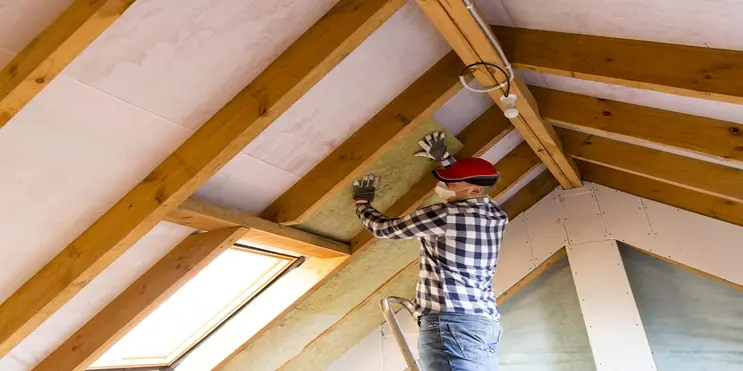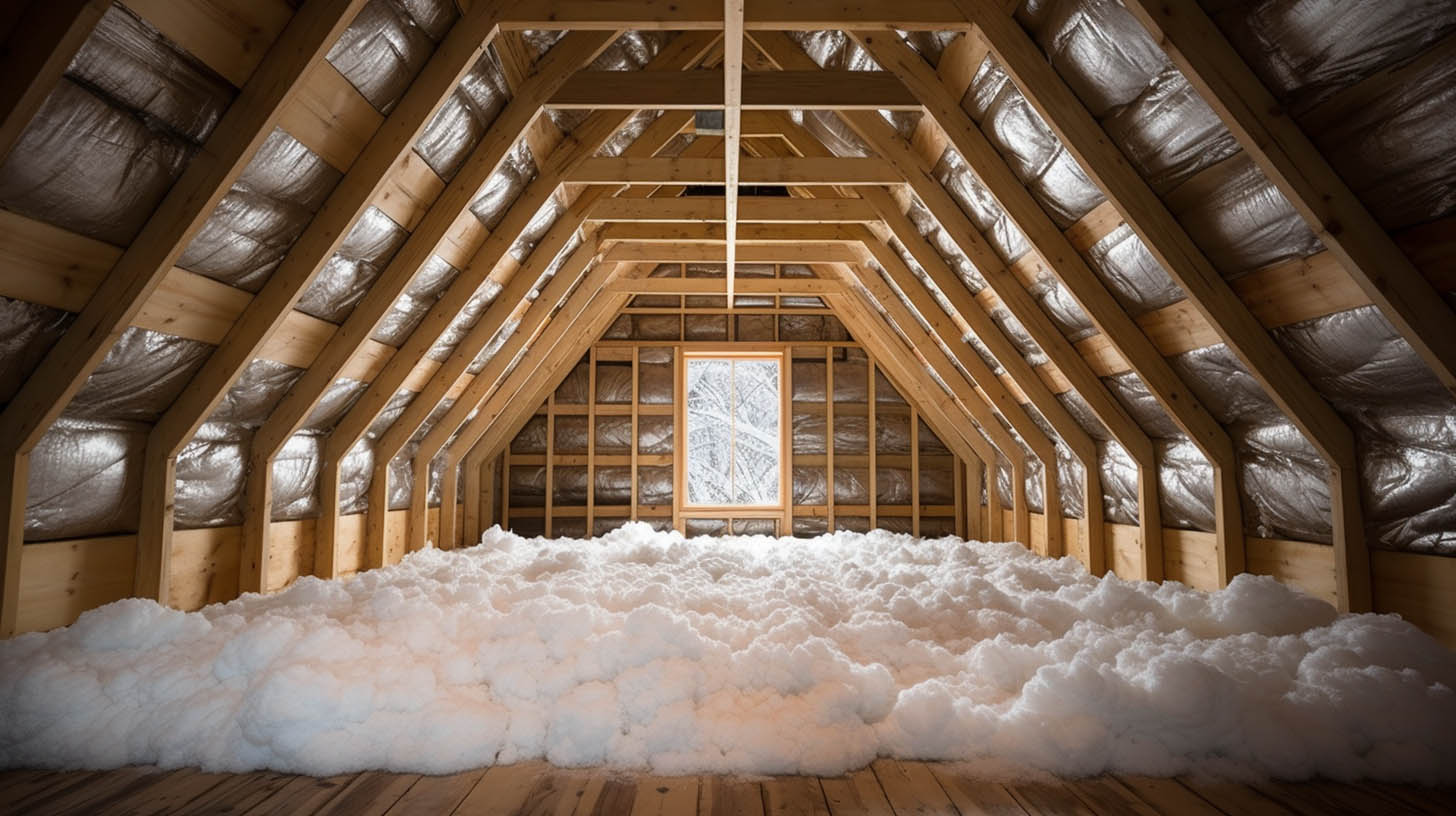How Attic Insulation DFW Can Change Your Home's Environment Control
Discover the Different Sorts Of Attic Insulation and Their Unique Benefits for Your Home's Energy Performance

Fiberglass Insulation
Fiberglass insulation is among one of the most commonly utilized materials for attic insulation due to its exceptional thermal efficiency and cost-effectiveness. Made up of small glass fibers, this product efficiently catches air, creating a protecting obstacle that helps preserve constant indoor temperatures. Its high R-value per inch makes it particularly effective at resisting warmth transfer, which is crucial for power preservation in homes.
Installment of fiberglass insulation is reasonably straightforward, typically readily available in batts or loose-fill kinds, fitting various attic room setups. Furthermore, it is non-combustible and immune to wetness, decreasing the danger of mold and mildew growth. This resilience contributes to its durability, making fiberglass a viable lasting investment for homeowners.
Furthermore, fiberglass insulation is often produced from recycled materials, which boosts its eco-friendliness. The product can likewise add to soundproofing, decreasing sound transfer in between rooms. While it is vital to put on safety gear during installation to prevent irritability from the fibers, the overall benefits of fiberglass insulation, including power financial savings and ecological factors to consider, make it a preferred selection for boosting attic room performance and promoting a comfortable living setting.
Spray Foam Insulation
Spray foam insulation is a highly efficient choice for attic insulation, understood for its premium air securing and thermal performance. This ingenious insulation material is composed of a mixture of isocyanate and polyol resin, which, when incorporated, increases rapidly to fill voids and tooth cavities in the attic area. Its ability to comply with numerous surface areas guarantees a continuous obstacle against air leakages, dramatically reducing warmth loss during cooler months and warm gain during warmer seasons.
One of the vital advantages of spray foam insulation is its high R-value per inch, which indicates it provides outstanding thermal resistance in a relatively slim application. This is especially helpful in attics where room is often minimal. Furthermore, spray foam can help decrease wetness buildup, minimizing the danger of mold and mildew and mildew development, which can be harmful to both the structure and interior air top quality.
While the preliminary price of spray foam insulation might be greater than standard options, its lasting energy financial savings, coupled with boosted comfort and boosted home value, make it a rewarding investment for house owners looking for improved energy performance. Attic Insulation DFW. Overall, spray foam insulation stands apart as an effective solution for enhancing attic insulation
Cellulose Insulation

Cellulose insulation is a prominent choice for attic room insulation, largely composed of recycled paper products treated with fire retardants. This eco-friendly alternative is recognized for its exceptional thermal efficiency, successfully reducing warmth transfer in both summertime and winter months. The thick make-up of cellulose permits it to load voids and voids in attic rooms, offering a smooth barrier versus air leaks.
Among the considerable advantages of cellulose insulation is its ability to stand up to mold and bugs, owing to the fire resistant therapies utilized throughout manufacturing. In addition, it flaunts a high R-value per inch, which equates right into exceptional power effectiveness. House owners can expect lower heating & cooling expenses as an outcome of enhanced insulation.
Installation is commonly accomplished via blowing loose cellulose into the preferred area, enabling a reliable and quick process. This method likewise decreases disturbance to the existing structure. Cellulose insulation has a relatively low ecological effect, as its production procedure utilizes recycled materials, adding to sustainable building practices.
Rock Wool Insulation
Among the various options for attic insulation, rock wool, also recognized as mineral wool, sticks out due to its outstanding thermal and acoustic performance. Made from recycled or natural materials, rock wool is produced by thawing rock and spinning it into fibers, resulting in a product that provides outstanding insulation homes.
One of the considerable benefits of rock wool insulation is its weblink high R-value, which suggests its effectiveness in resisting heat flow. This particular not just enhances power effectiveness but also adds to keeping a comfy indoor temperature year-round. In addition, rock wool is inherently fire-resistant, making it a safer alternative for homes as it can endure high temperatures i loved this without melting or releasing poisonous fumes.
Moreover, rock woollen insulation stands out in soundproofing abilities, properly decreasing sound transmission in between spaces and from outdoors sources. In general, rock woollen insulation provides a thorough service for improving power efficiency, safety, and comfort in property setups.
Glowing Obstacle Insulation
Glowing barrier insulation serves as an efficient solution for reducing warmth transfer in attic rooms, particularly in warmer climates. This kind of insulation jobs by showing induction heat far from living rooms, therefore minimizing the quantity of warm that enters a home throughout warm weather - Attic Insulation DFW. Usually composed of an extremely reflective material, such as aluminum foil, radiant obstacles are mounted in attics, dealing with the roofing, where they can intercept inbound heat from the sunlight
The main advantage of radiant barrier insulation is its ability to lower cooling expenses. By showing heat instead of absorbing it, glowing obstacles can aid keep a more steady interior temperature, minimizing the workload on a/c systems. This efficiency translates into reduced power expenses and boosted comfort for property owners.
Along with power financial savings, radiant barriers can also add to boosted interior air high quality. By reducing heat buildup, they help decrease humidity levels, which can avoid mold and mildew growth and boost general air flow. When installed properly, radiant barrier insulation can be an important enhancement to any energy-efficient home, making it a worthwhile factor to consider for property owners wanting to improve their attic insulation method.
Conclusion
In conclusion, recognizing the various kinds of attic room insulation-- fiberglass, spray foam, cellulose, rock wool, and glowing obstacles-- makes it possible for homeowners to make informed choices regarding energy efficiency. By selecting the ideal insulation material, significant decreases in energy expenses can be attained, along with enhancements in interior convenience.

In final thought, understanding the numerous types of attic room insulation-- fiberglass, spray foam, cellulose, rock wool, and glowing obstacles-- allows property owners to make educated decisions concerning energy efficiency.